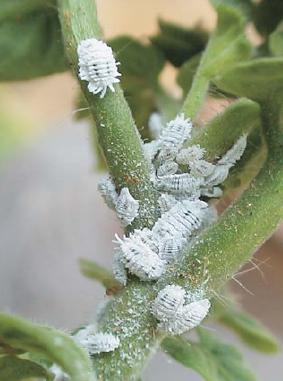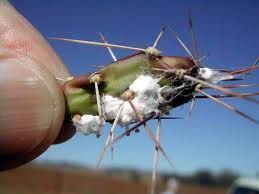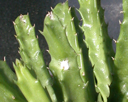
Mealy bugs
Pseudococcus maritimus
Pseudococcus citri
Please go to our Glossary link at the bottom of the page for explanations of scientific terms
Identification
Mealybugs exude a white waxy substance that envelopes their entire pink-colored bodies. Their sap-sucking activity weakens and eventually kills severely infected plants. If not controlled, mealy bugs will very soon form large colonies in protected corners of cluster-forming cacti like rebutia, mammillaria, chamaecereus, and echinopsis. They will thrive in the axils where they are particularly indistinguishable from the axil hairs of some species like mammillaria. They will also locate themselves at the apex or on the stem base of species like echevera, crassula, faucaria, pleiospilos and other succulents.
Root mealybugs (RhizoecusFalcifer) are among the worst pests of cacti and other succulents. They live almost exclusively on roots and the parts of the stem that are below the surface. They are similar to mealybugs in that they also secrete whitish, woolly, or powdery wax. Root mealybugs prefer dry substrates. They multiply particularly rapidly during the dry winter dormancy period. Affected plants look pale, become sickly, and gradually die. Plants damaged and weakened by root mealybugs are especially susceptible to fungal diseases.
Prevention
The ideal situation would be to have a quarantine area, where newly purchased plants can reside for a month or two, before being introduced to the main collection. New plants may look clean, but only need to have just one mealy bug egg on them to start an infestation.With large collections, a preventative spray with a suitable insecticide, may be carried out, in spring and again in the autumn.
A drench twice a year is the best, and sometimes the only way to combat root mealy bugs.
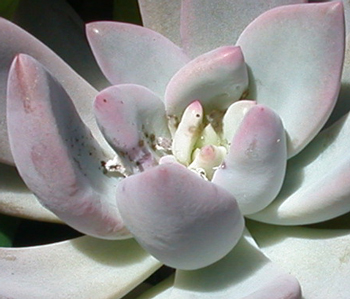
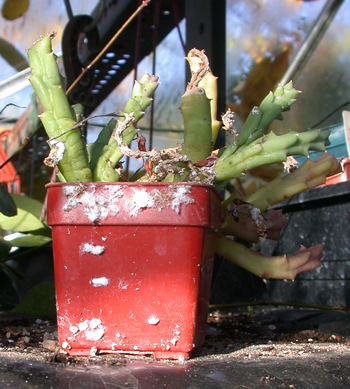
Cure
Cacti should be continually inspected for signs of this pest's attack. Upon inspection, if only a few mealybugs are found, it is sufficient to dab them directly with surgical spirit (an ethyl alcohol-methyl alcohol mixture, known as "Rubbing alcohol" in some countries) on a brush or cotton swab. Another method is to spray them off with a strong jet of water using a fine spray nozzle.
The use of chemical control methods is unavoidable in an advanced stage of infestation. Use a preparation specifically for scale insects or mealybugs because these insecticides adhere more readily to the water-repellent wax secretions. If you use a spray, thoroughly spray concealed places on the plant. The treatment must be repeated several times at weekly intervals.
A recommended chemical for control is Provado.
In some countries dimethoate, malathion and metasystox are still available.
Biological Control, using the predatory ladybird Cryptolaemus montrouzieri (at 5 beetles per sq. m. ) can be effective in greenhouses, but temperatures must remain above 20 deg. C. for good control. (Use only between April and September)
Insecticidal soap can be used to control mealy bugs, but great care must be taken with this as it can damage the waxy skin of cacti and succulents. It must be tested on a small area or an unwanted plant initially, to determine plant susceptibility.
See our links page for suppliers of control methods.

